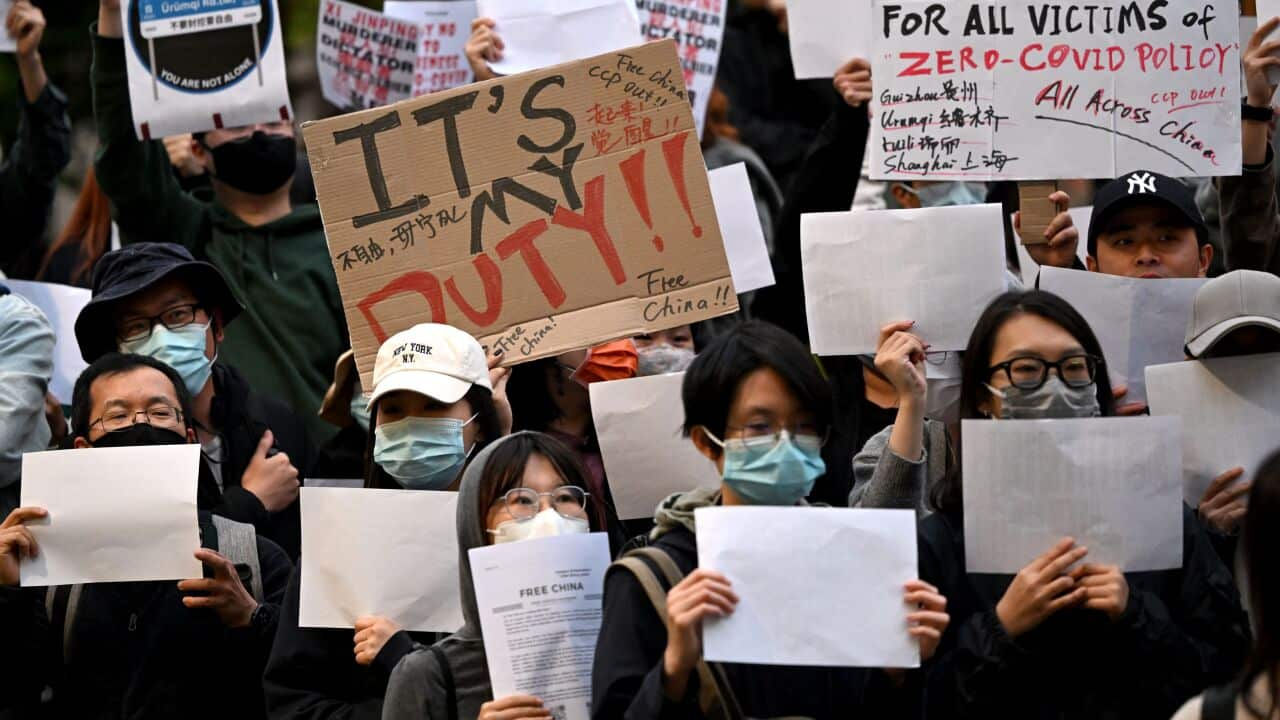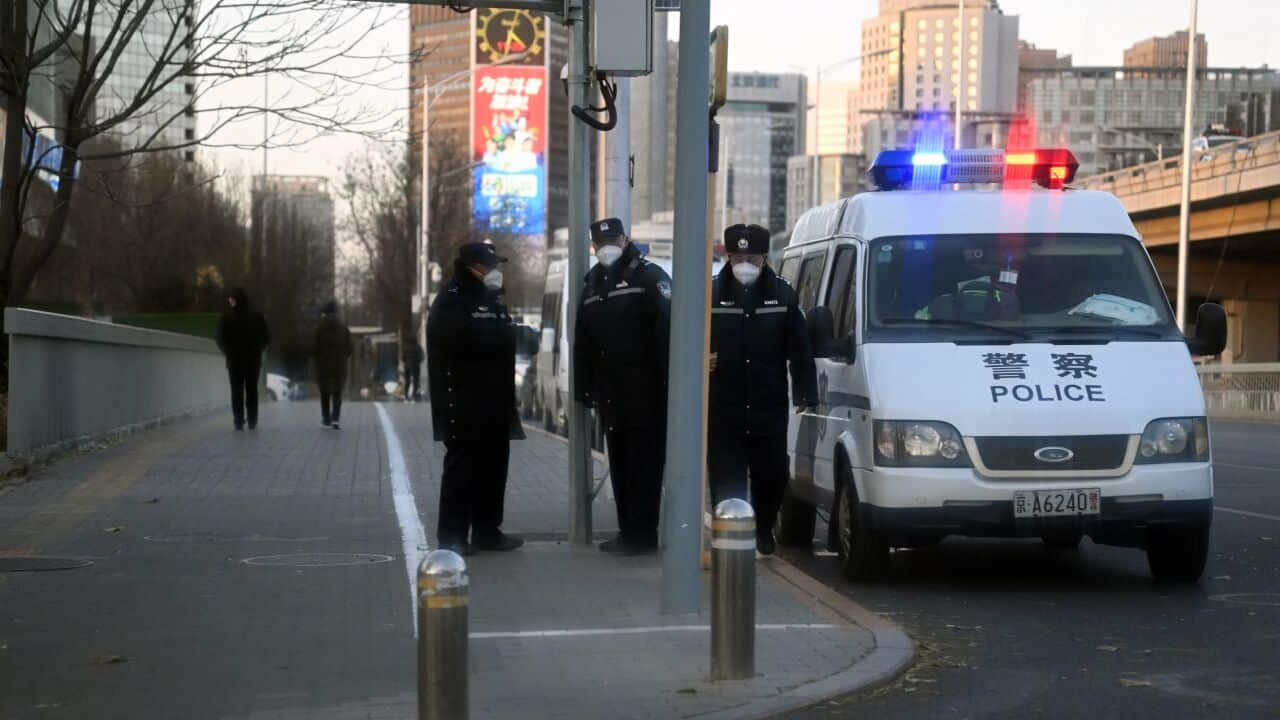Key Points
- Anger over China's zero-COVID policy has sparked protests in major cities, including Beijing, Shanghai and Guangzhou.
- China's top COVID-19 official and multiple cities have signalled a possible relaxing of the country's strict approach.
- It comes as some cities have been lifting their lockdowns in recent days.
China's top COVID-19 official and multiple cities have signalled a possible relaxing of the country's strict zero-tolerance approach to the virus, after nationwide protests calling for an end to lockdowns and greater political freedom.
Anger over China's zero-COVID policy - which involves mass lockdowns, constant testing and quarantines even for people who are not infected - has sparked protests in major cities, including Beijing, Shanghai and Guangzhou.
But while authorities have called for a "crackdown" in the wake of the demonstrations, they have also begun hinting that a relaxation of the hardline virus strategy could be in the works.
Sources told Reuters the country is set to announce an ease to its COVID 19 quarantine restrictions in the coming days and a reduction in mass testing.
Cases nationwide remain near record highs but the changes come as some cities have been lifting their lockdowns in recent days.
Health authorities announcing the easing in their areas have not mentioned the protests - the biggest show of civil disobedience in China for years.
The measures due to be unveiled include a reduction in the use of mass testing and regular nucleic acid tests as well as moves to allow positive cases and close contacts to isolate at home under certain conditions, the sources familiar with the matter said.
That is a far cry from earlier protocols that led to public frustrations as entire communities were locked down, sometimes for weeks, after even just one positive case.
The frustration boiled over last week in demonstrations of public defiance unprecedented in mainland China since President Xi Jinping took power in 2012. The unrest comes as the economy is set to enter a new era of much slower growth than seen in decades.
Less than 24 hours after violent protests in Guangzhou on Tuesday, authorities in at least seven districts of the sprawling manufacturing hub, said they were lifting temporary lockdowns. One district said it would allow schools, restaurants and businesses including cinemas to reopen.
Cities including Chongqing and Zhengzhou also announced easings.
China is facing a 'new situation,' says top official
The sense of official momentum towards a landmark shift built on Thursday as Vice Premier Sun Chunlan, who oversees COVID efforts, told a meeting of frontline experts that the Omicron variant was weakening in its ability to cause disease, allowing China to improve prevention efforts.
"After nearly three years fighting against the epidemic, our country's medical and healthcare system has withstood the test," she said in remarks published by the official Xinhua news agency.
"The vaccination rate of the entire population exceeds 90 per cent and public health awareness and quality has been improved significantly," she said.
State media reported Ms Sun saying a day earlier that China was facing a "new situation" in its response to COVID, and urged further "optimisation" of testing, treatment and quarantine policies.
The mention of weakening COVID pathogenicity contrasts with previous messages from a usually hawkish Ms Sun about the deadliness of the virus.
"Sun's (earlier) speech, in addition to the notable easing of COVID control measures in Guangzhou yesterday, sends yet another strong signal that the zero-COVID policy will end within the next few months," analysts at Nomura said in a research note.
"These two events perhaps point to the beginning of the end of zero-COVID."
Expectations have grown around the world that China, while still trying to contain infections, could look to re-open its borders at some point next year once it achieves better vaccination rates among its hesitant elderly.
Health experts warn of widespread illness and death if COVID is let loose before vaccination is ramped up.
Chinese stocks and markets around the world dipped initially after the weekend protests in Shanghai, Beijing and other cities, but later recovered on hopes that public pressure could lead to a new approach by authorities.
While the change in tone on COVID appears a response to the public discontent with strict measures, authorities are also seeking out for questioning those present at the demonstrations.
China Dissent Monitor, run by US government-funded Freedom House, estimated at least 27 demonstrations took place across China from Saturday to Monday. Australia's ASPI think tank estimated 51 protests in 24 cities.



